
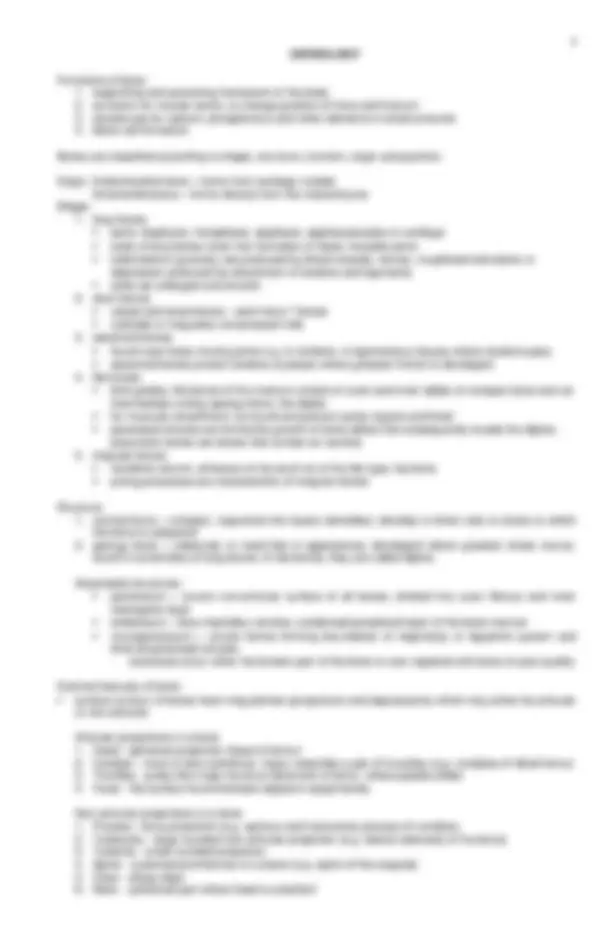
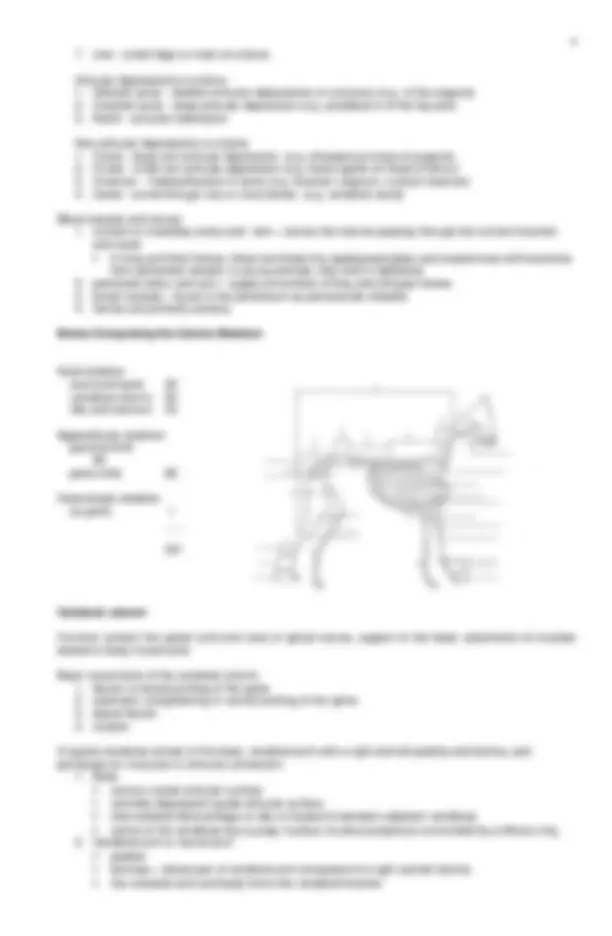
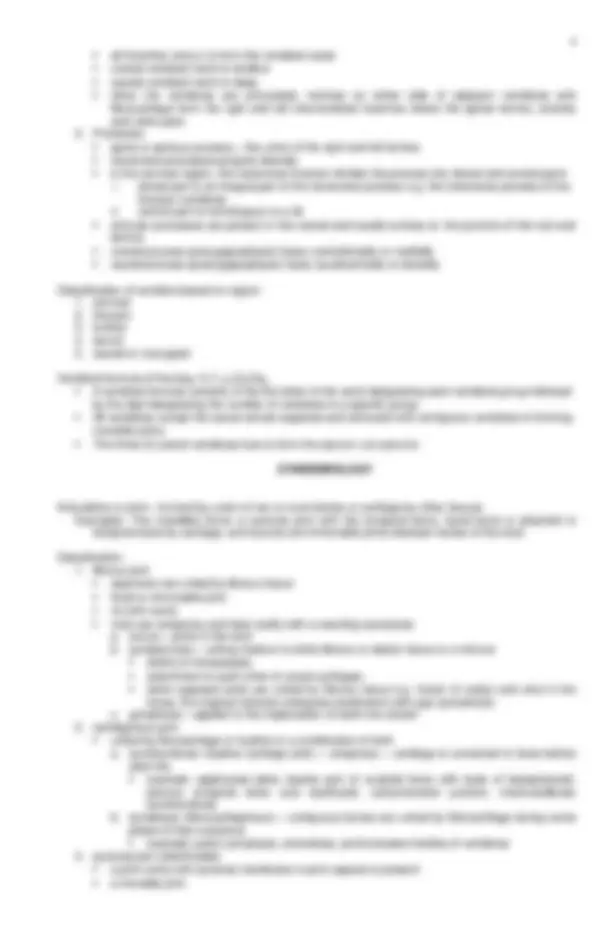
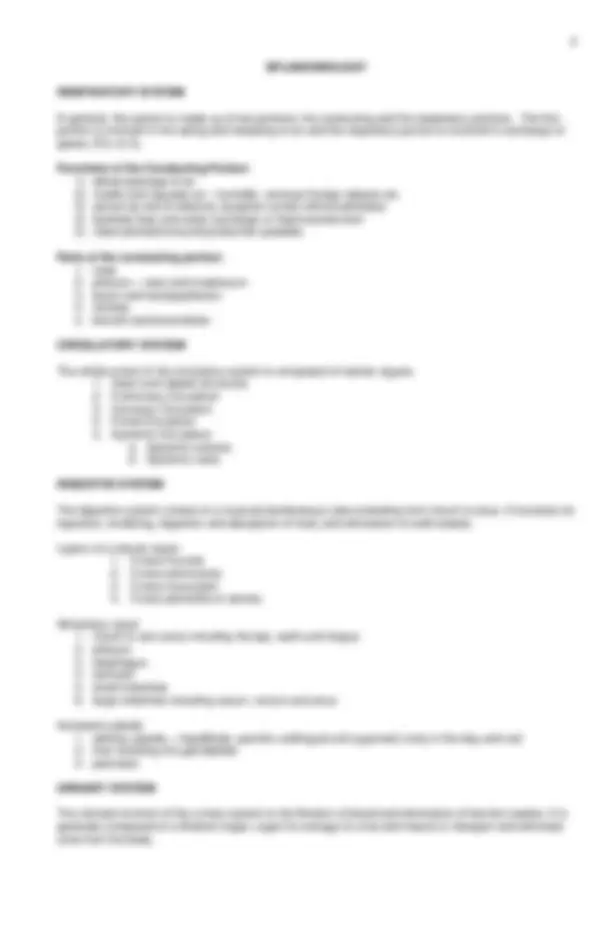

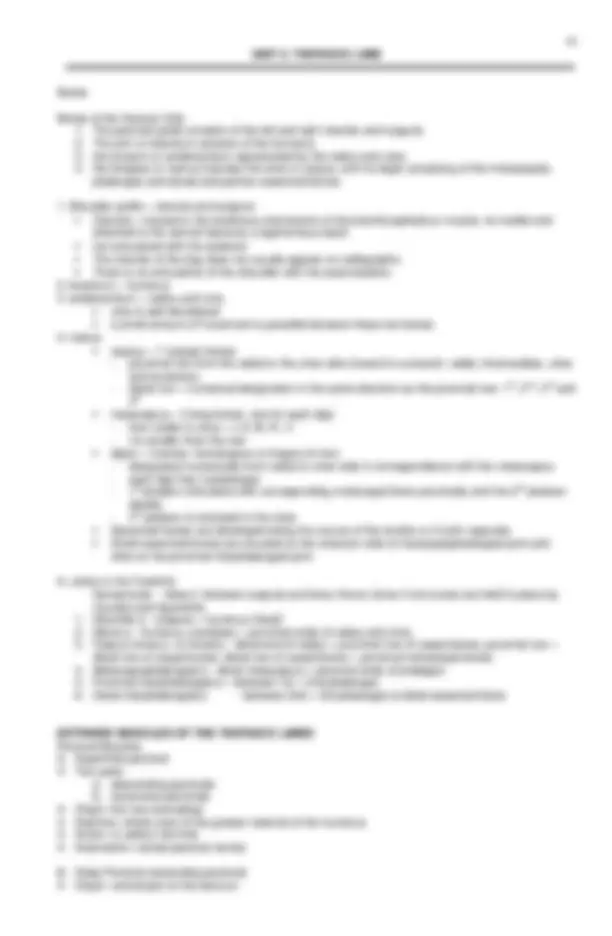
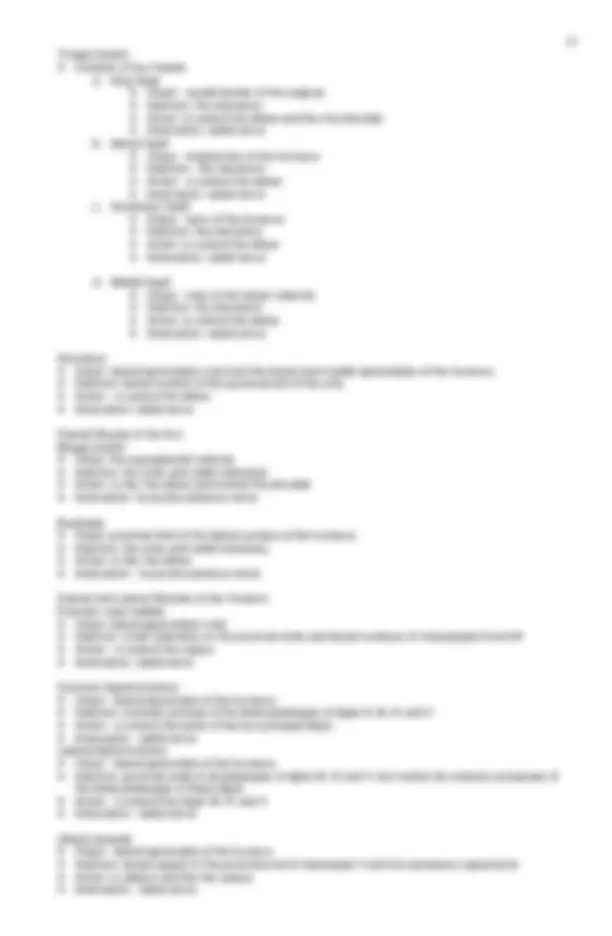
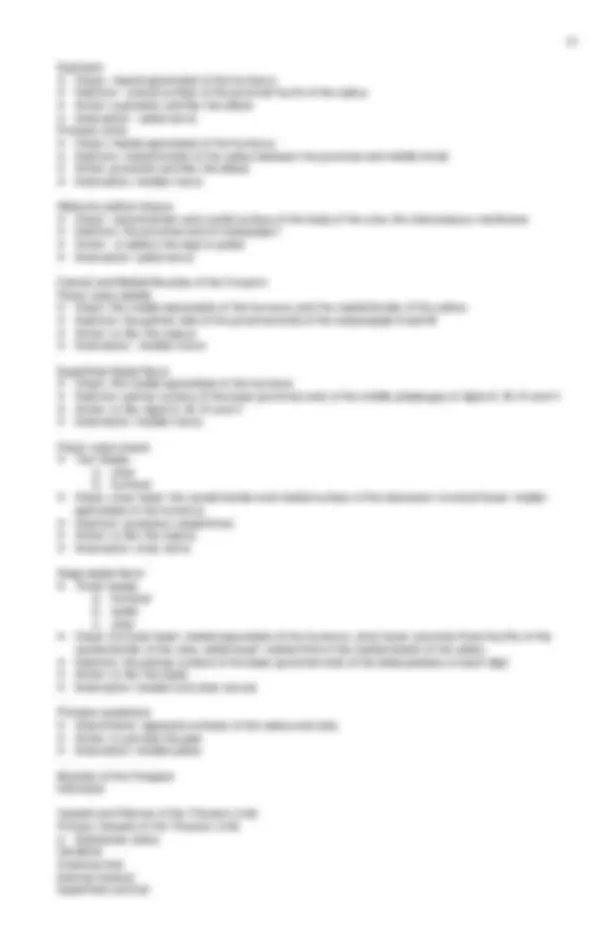
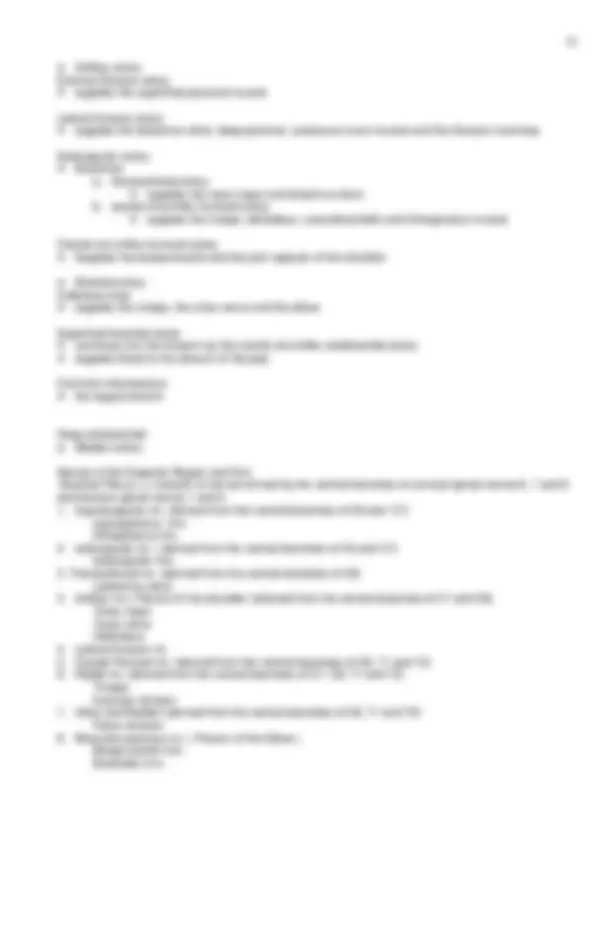
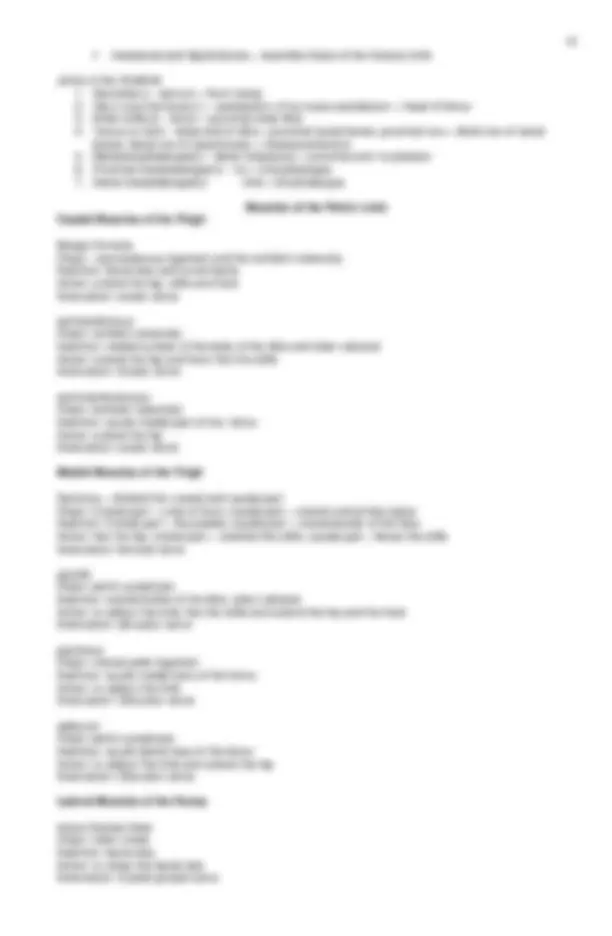
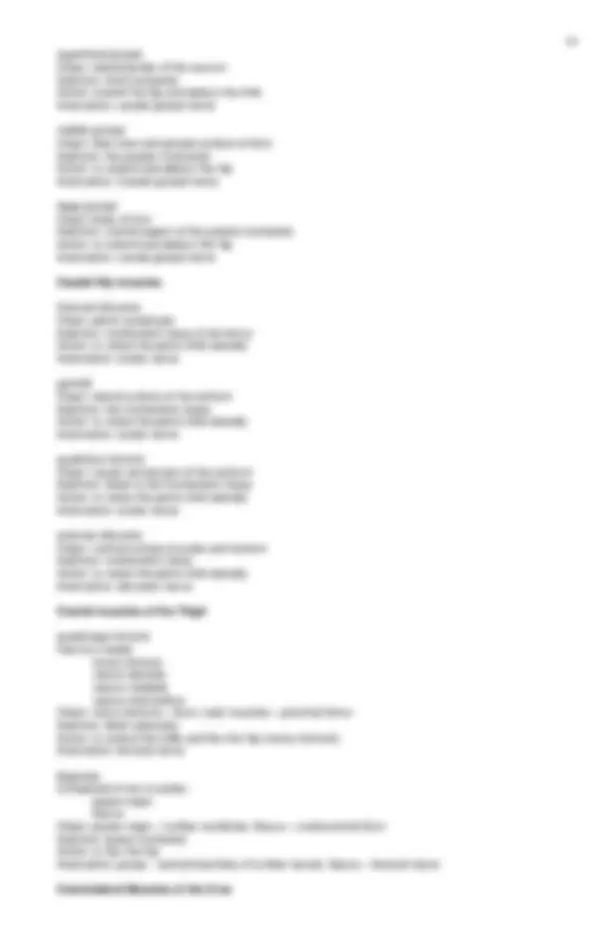
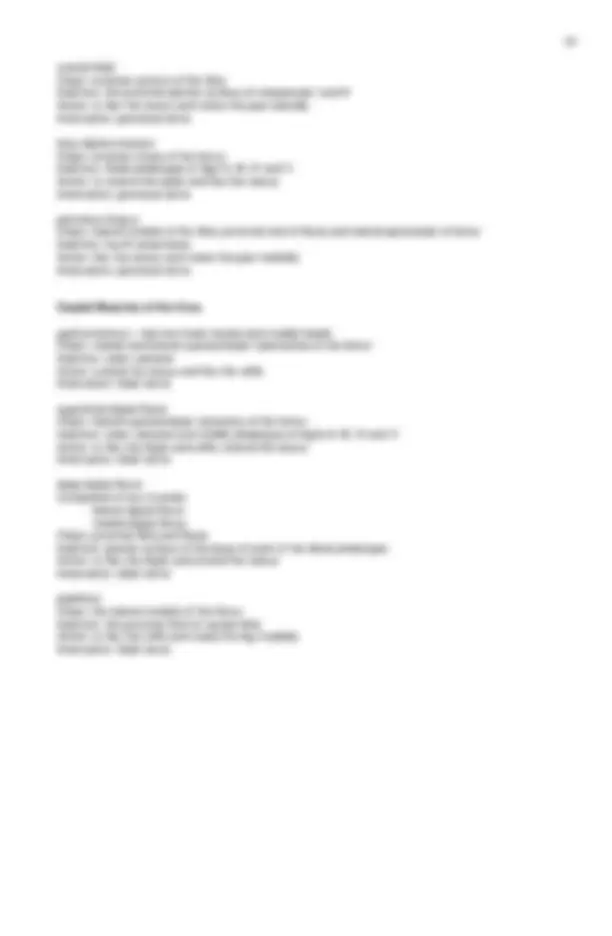
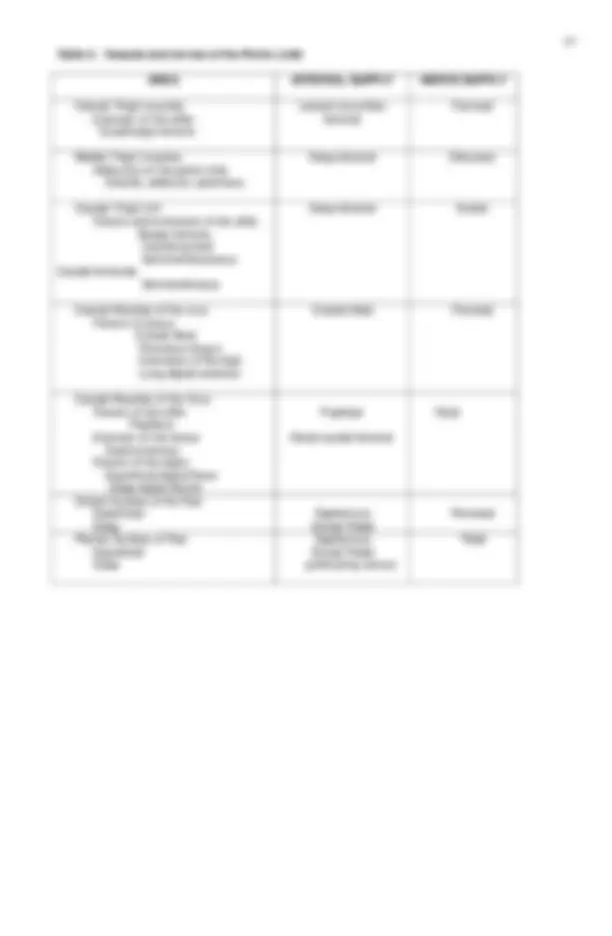
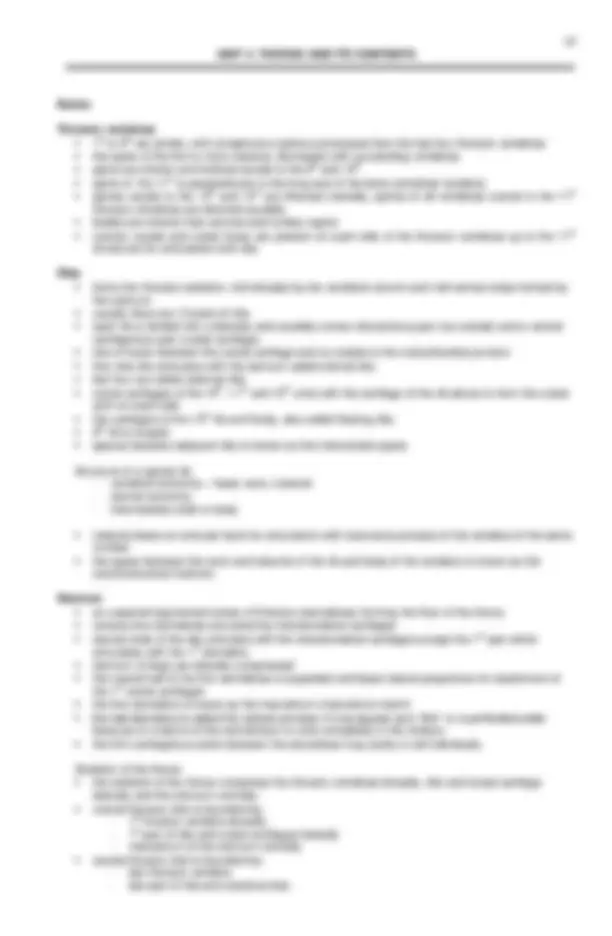
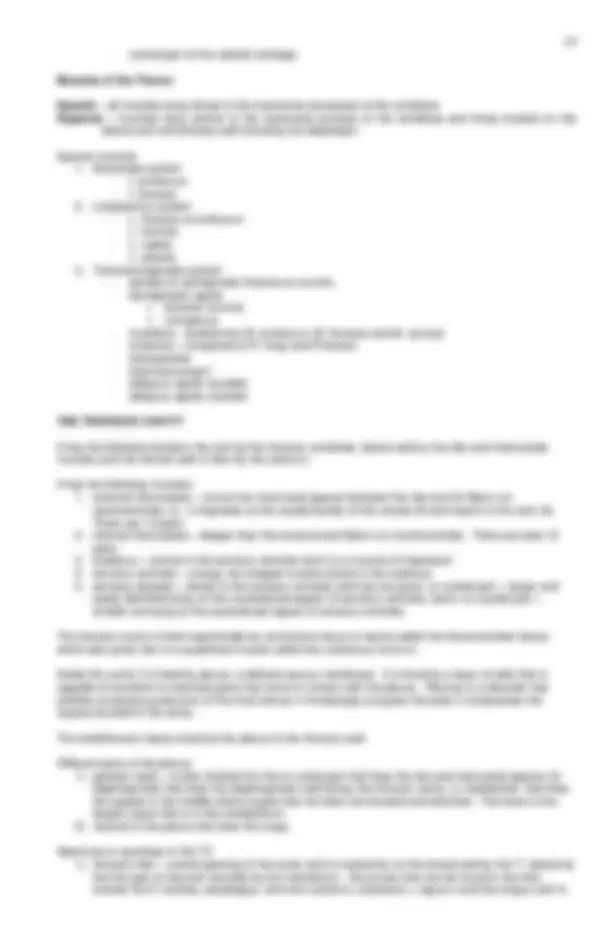
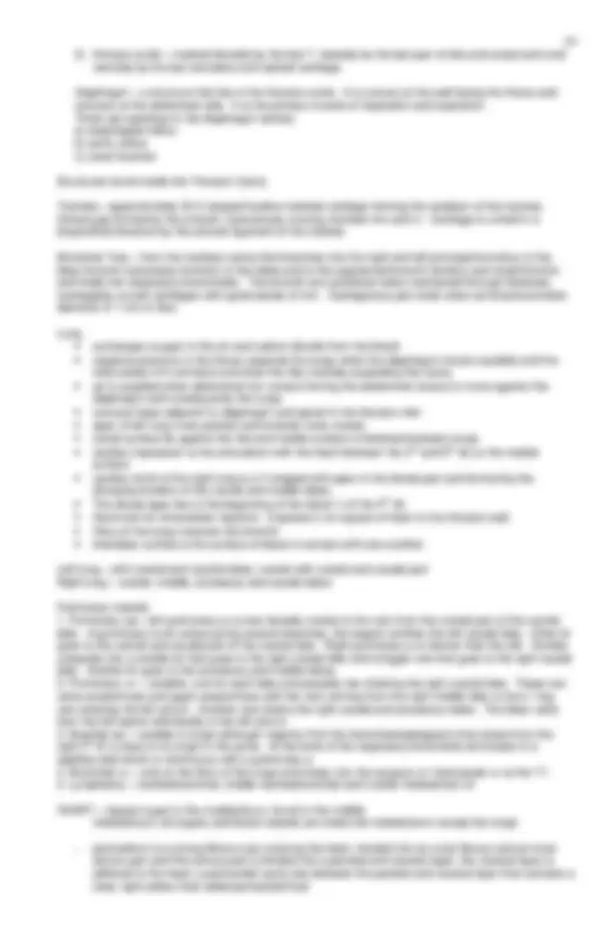
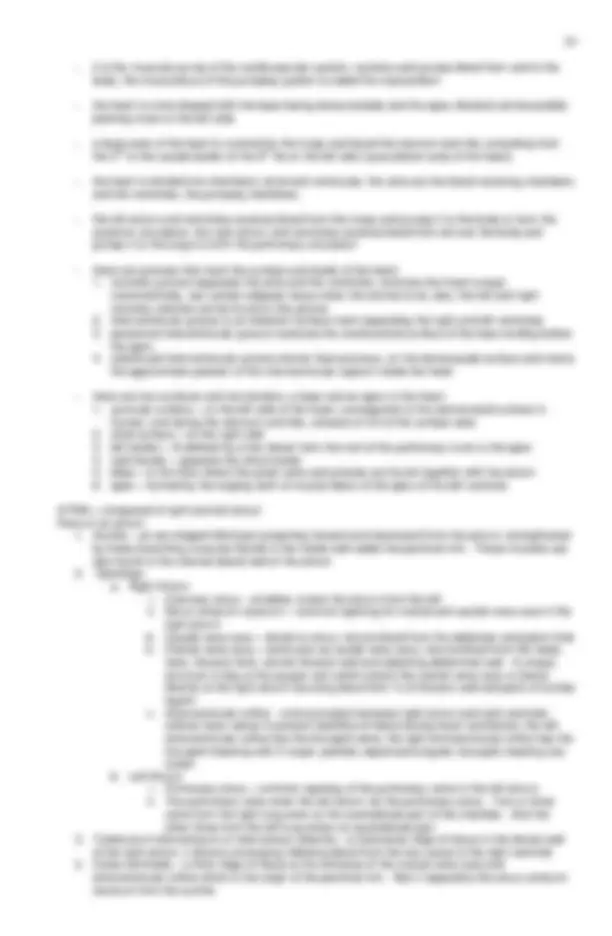
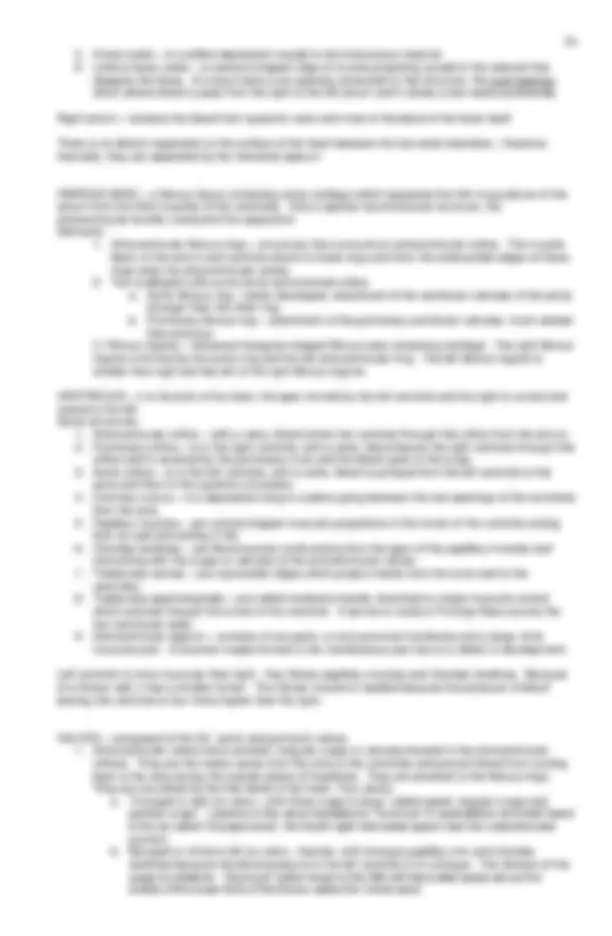
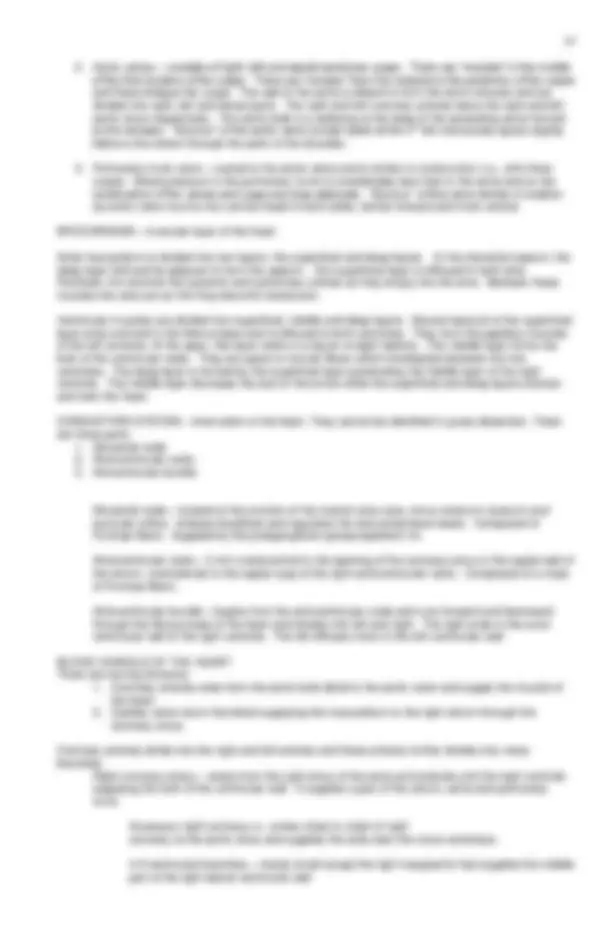
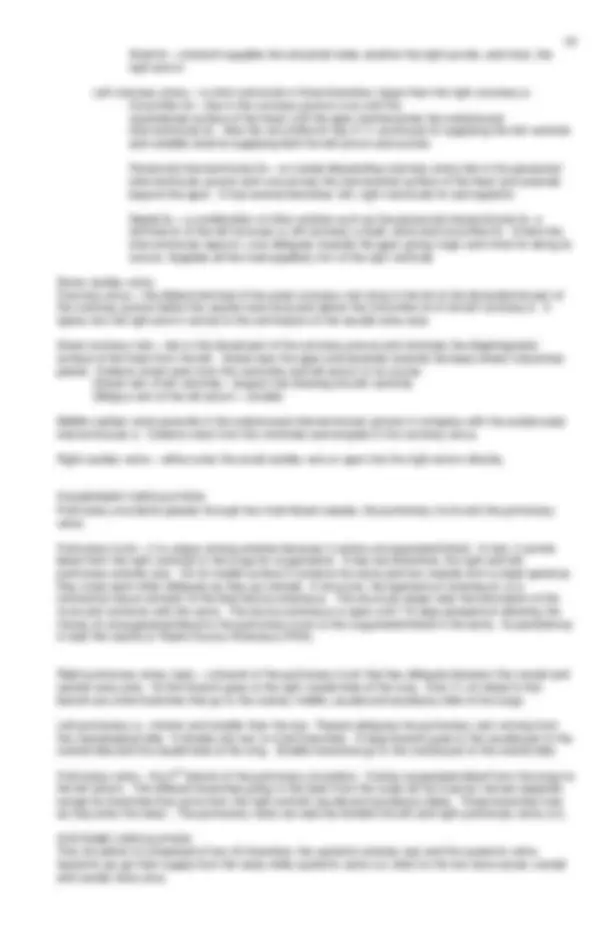
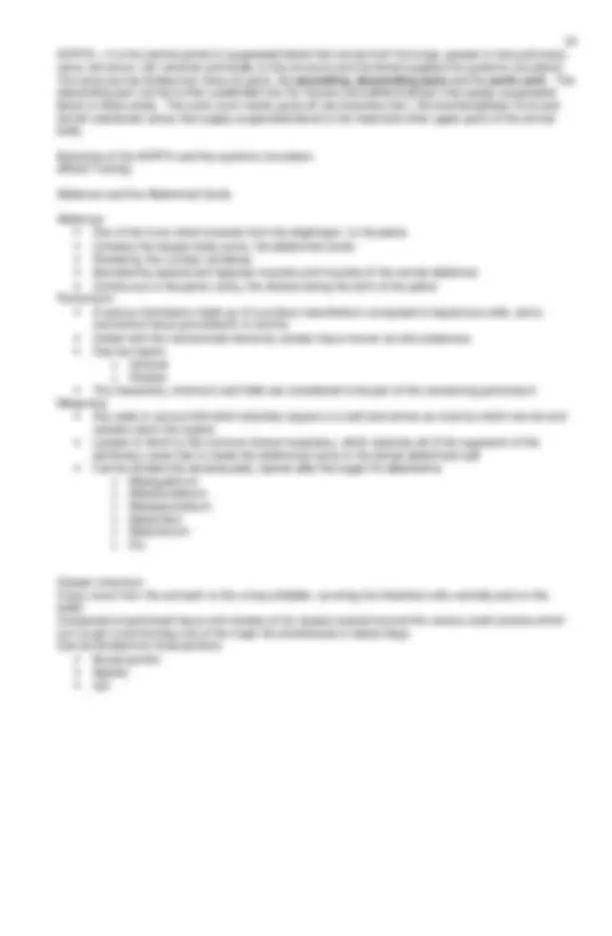
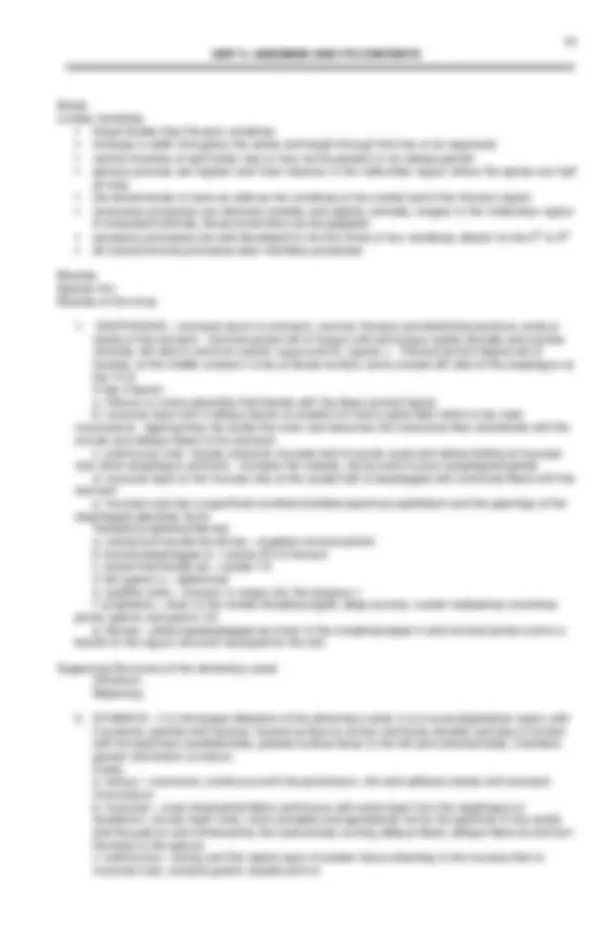
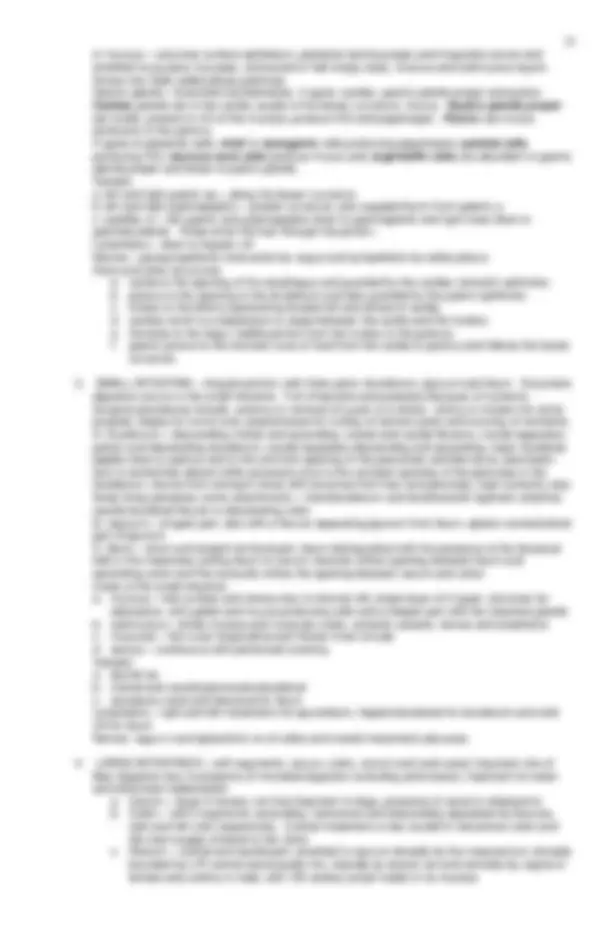
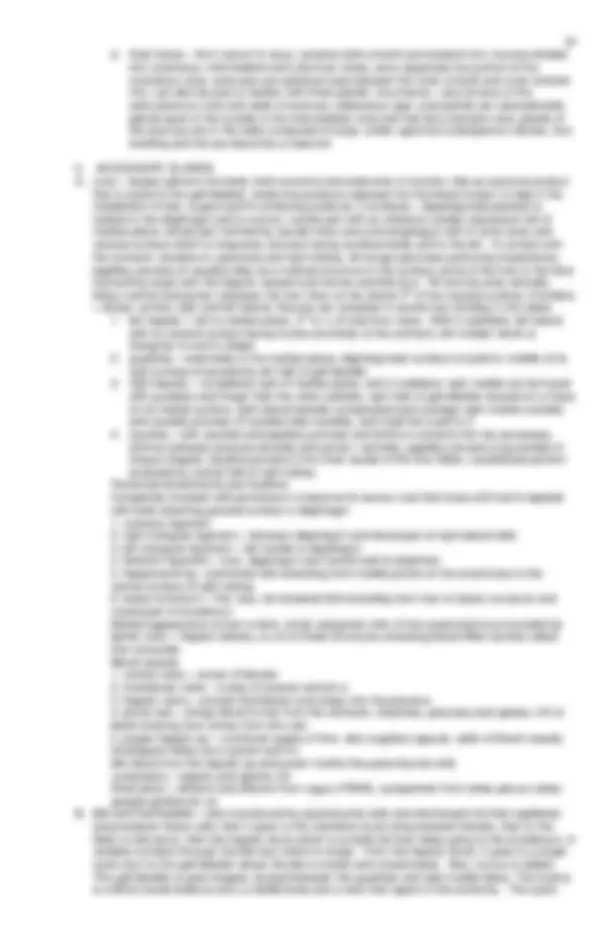
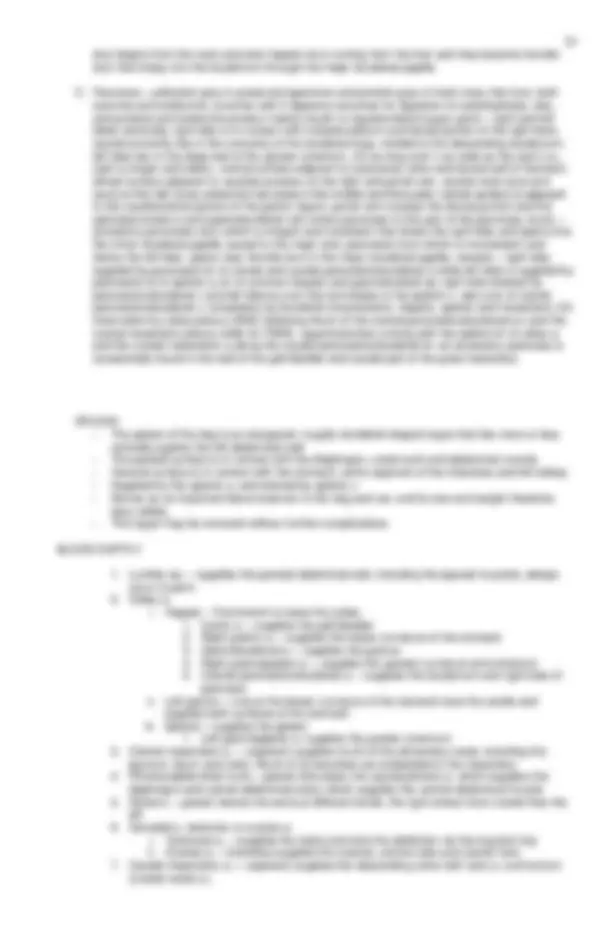
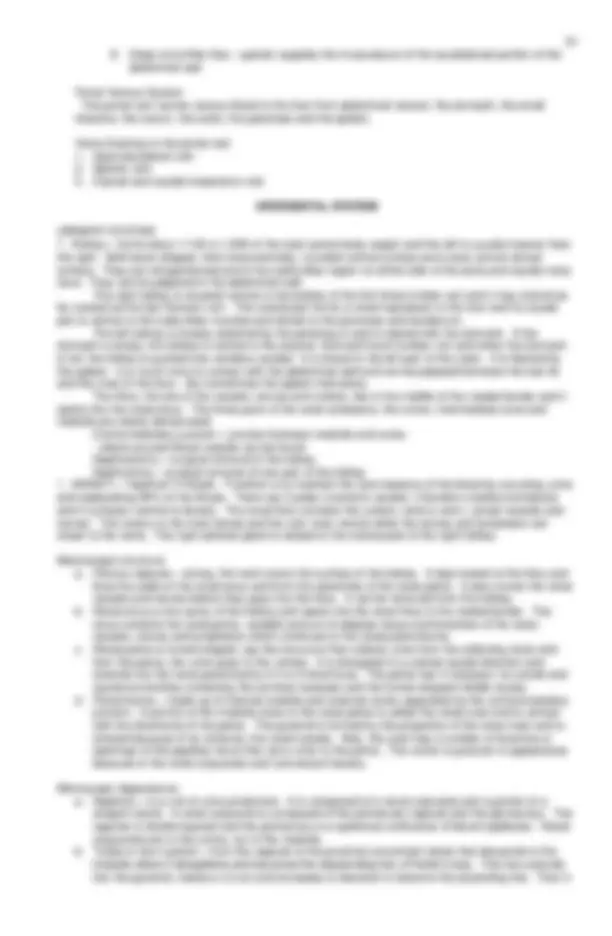
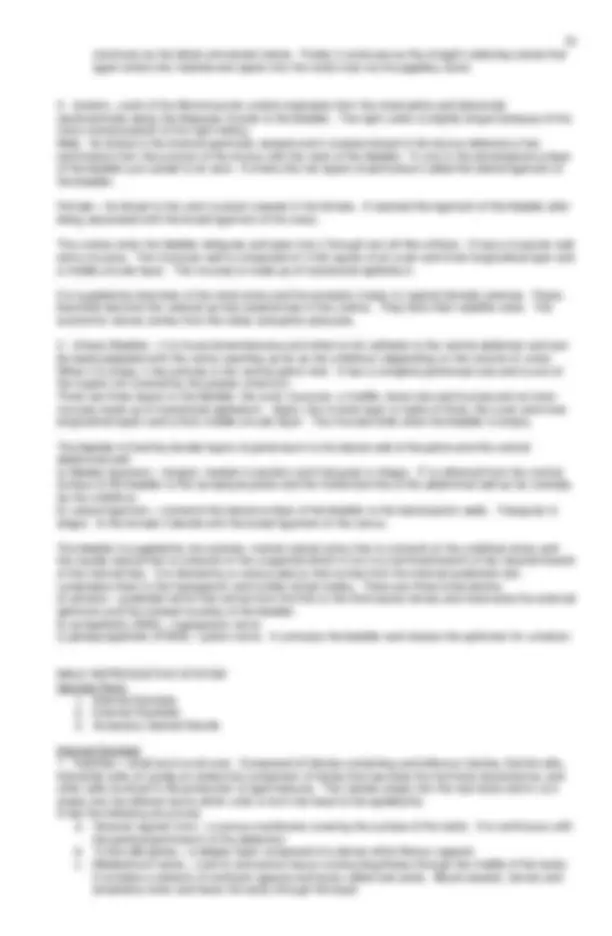
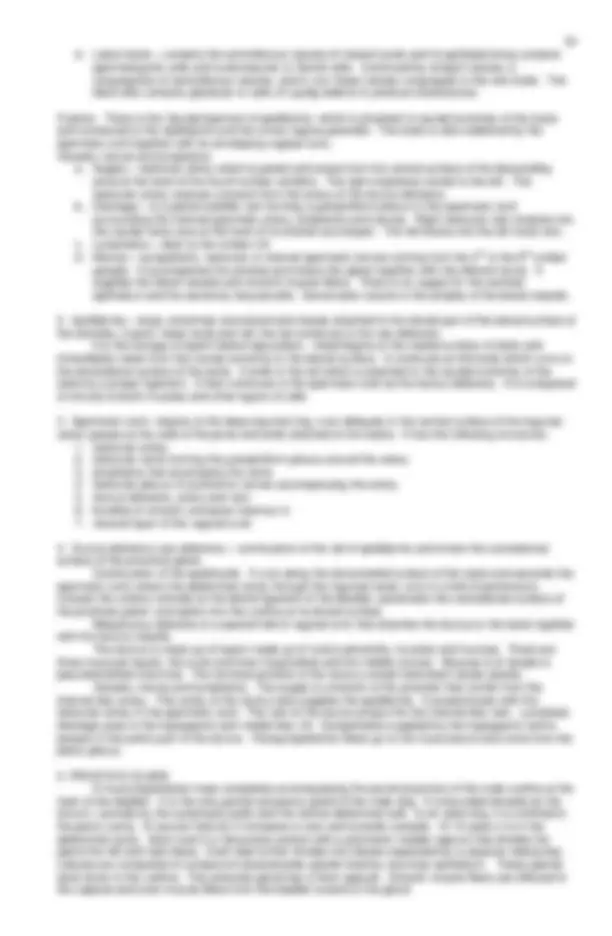
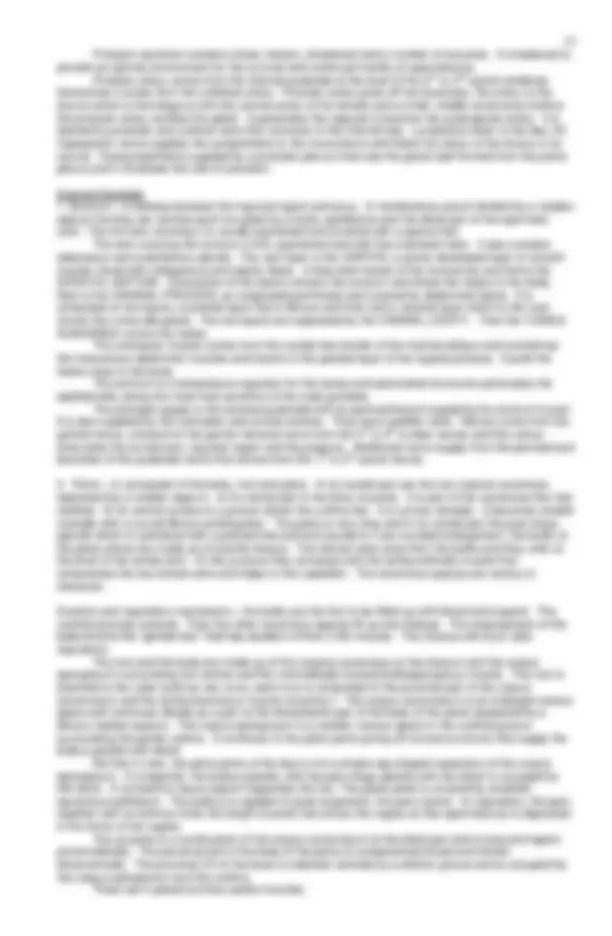
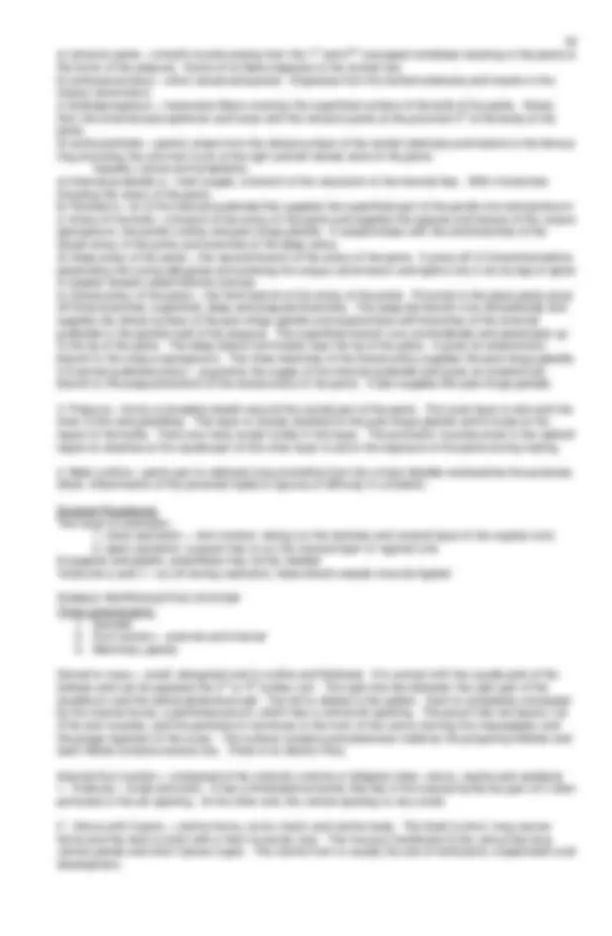
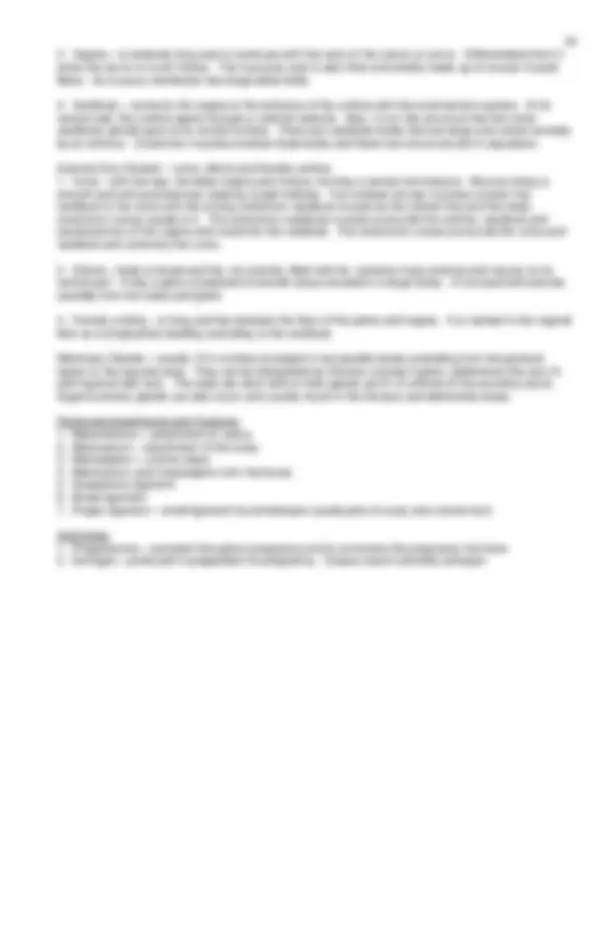
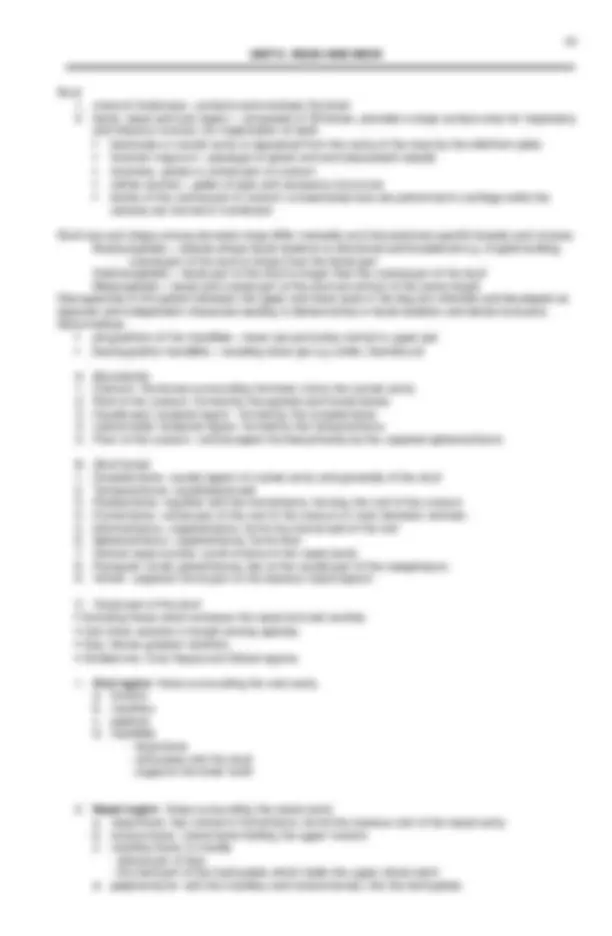
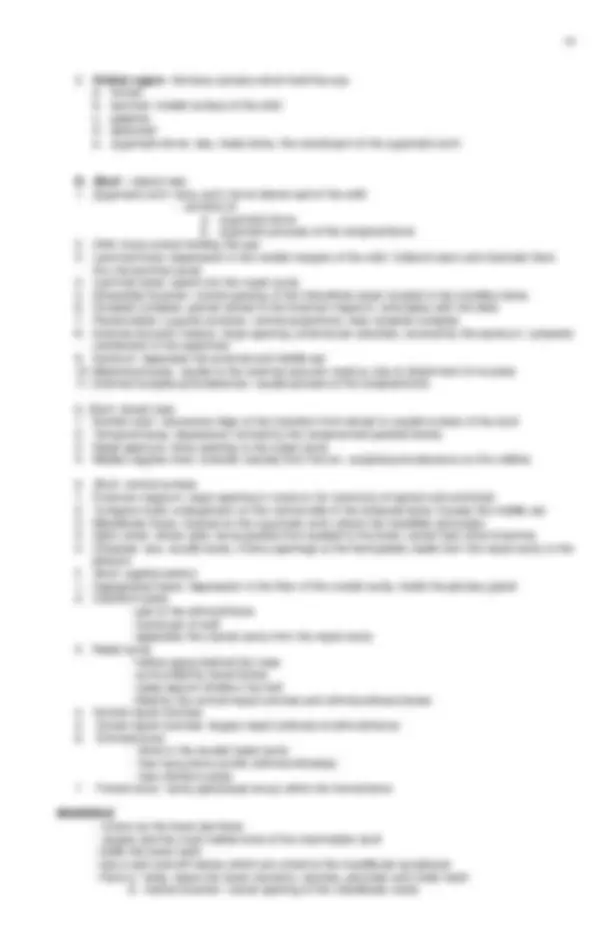
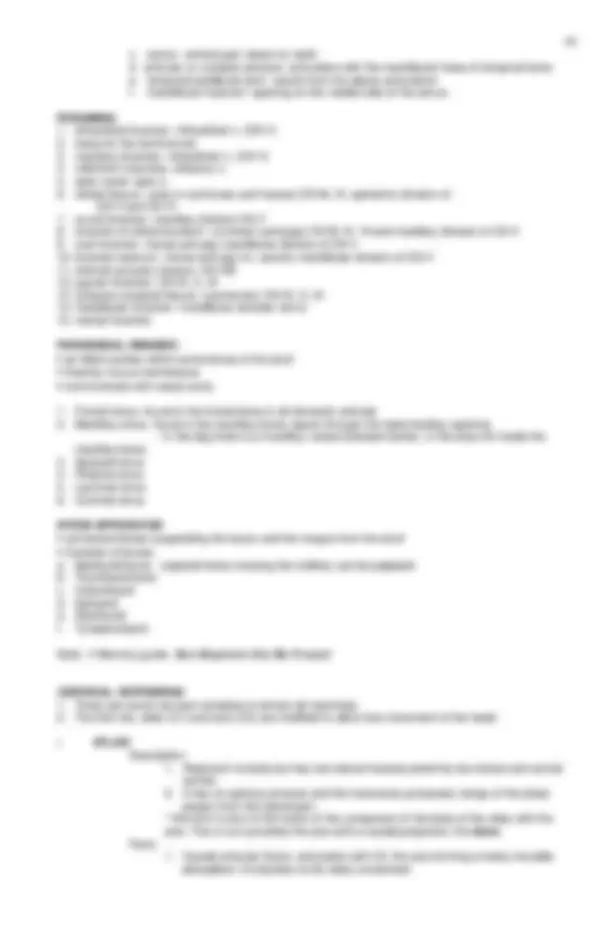
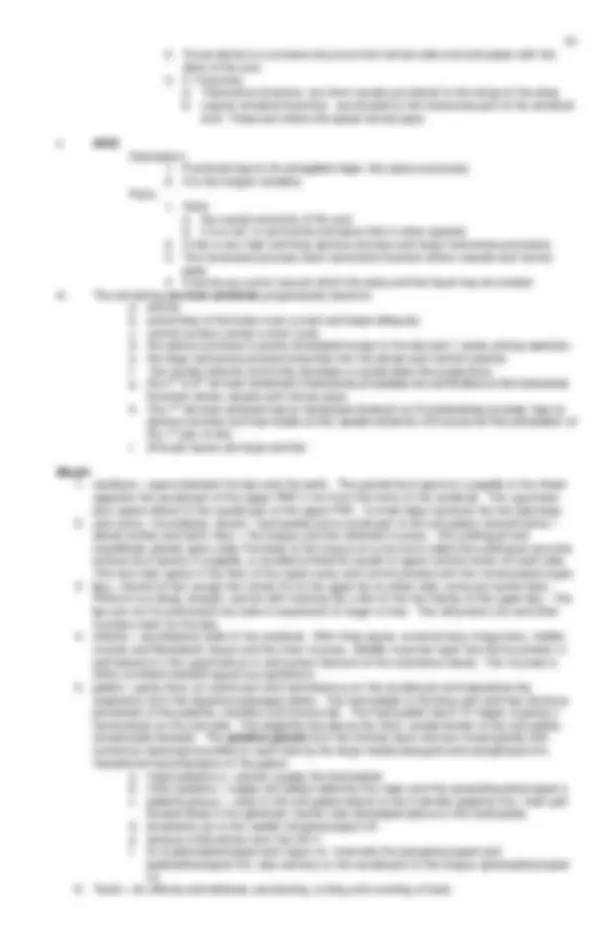
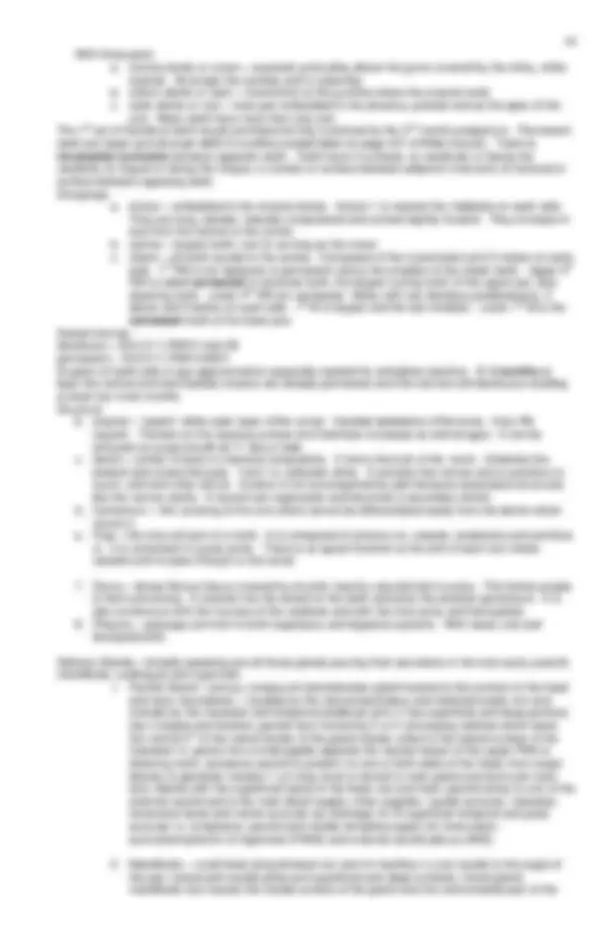
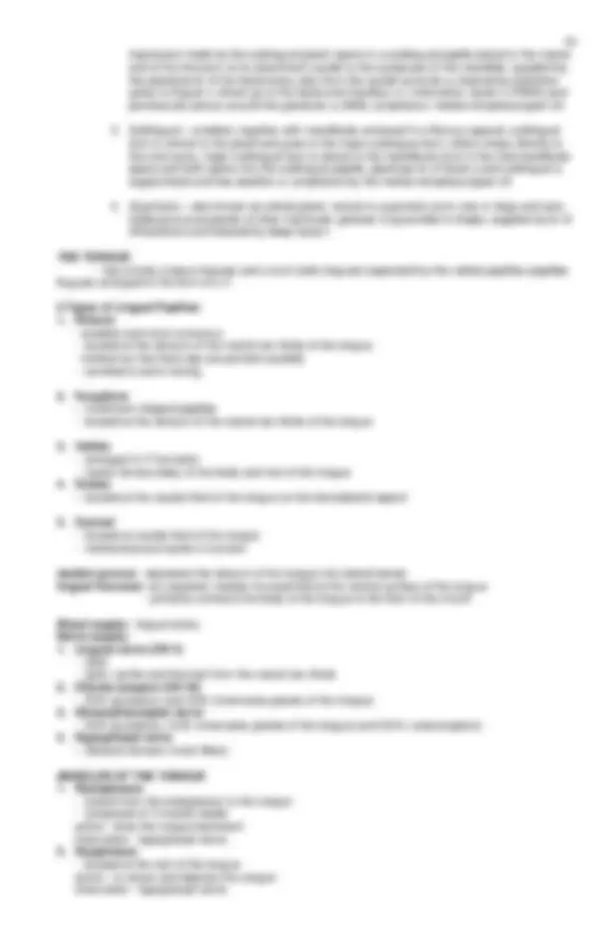
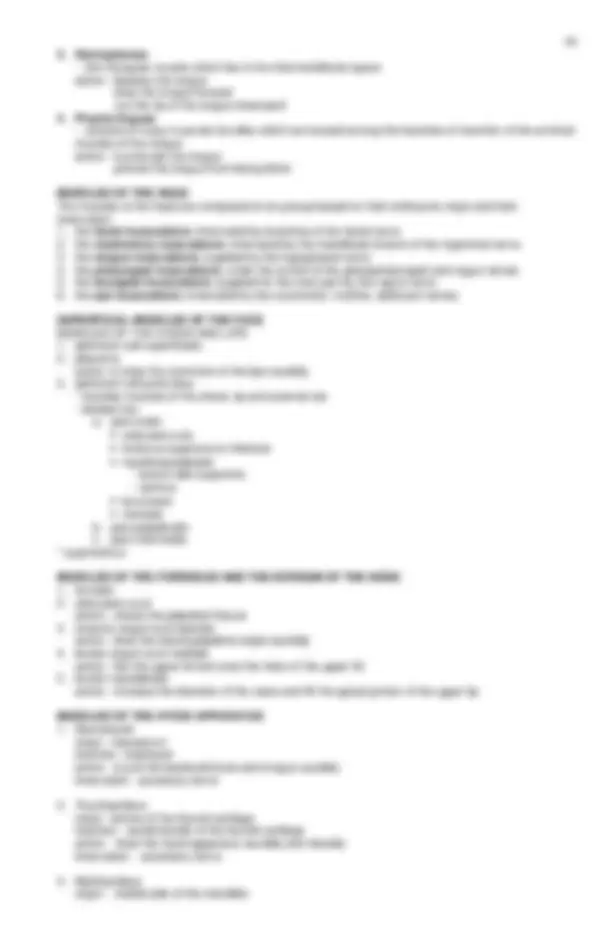
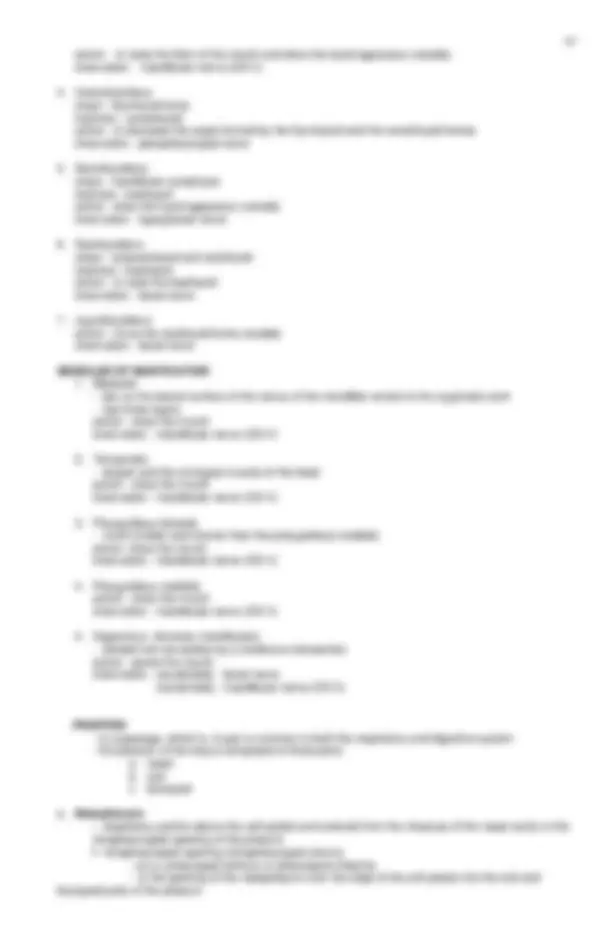
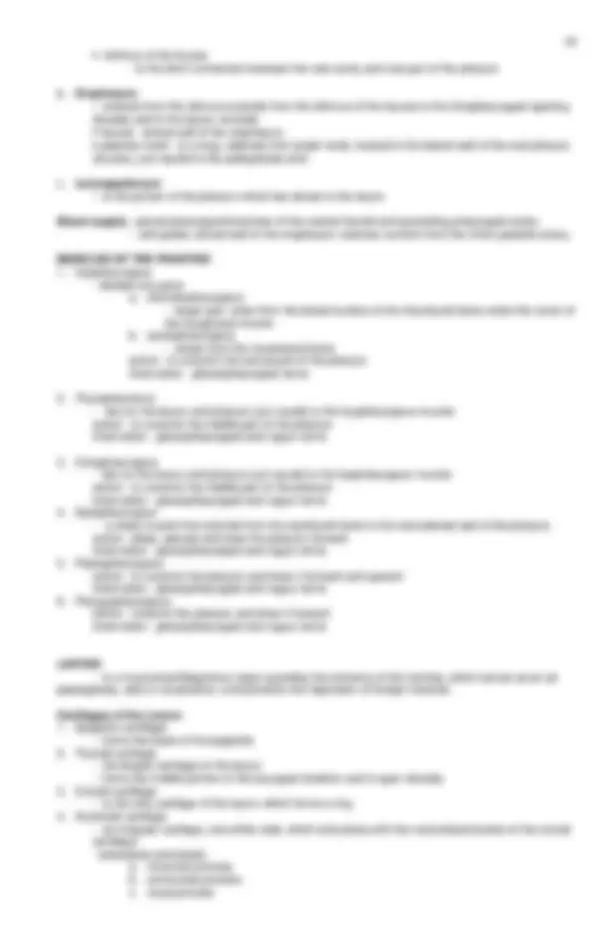
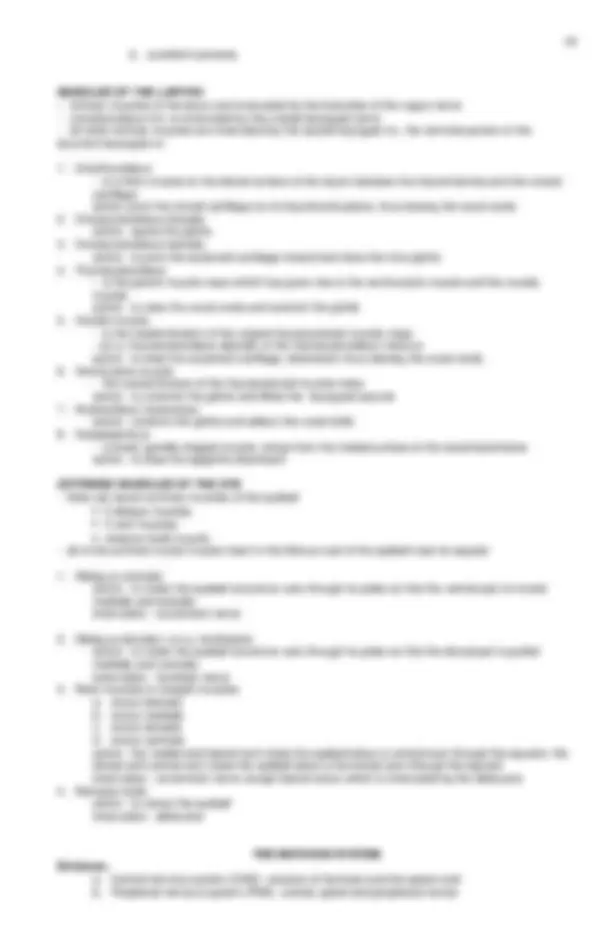
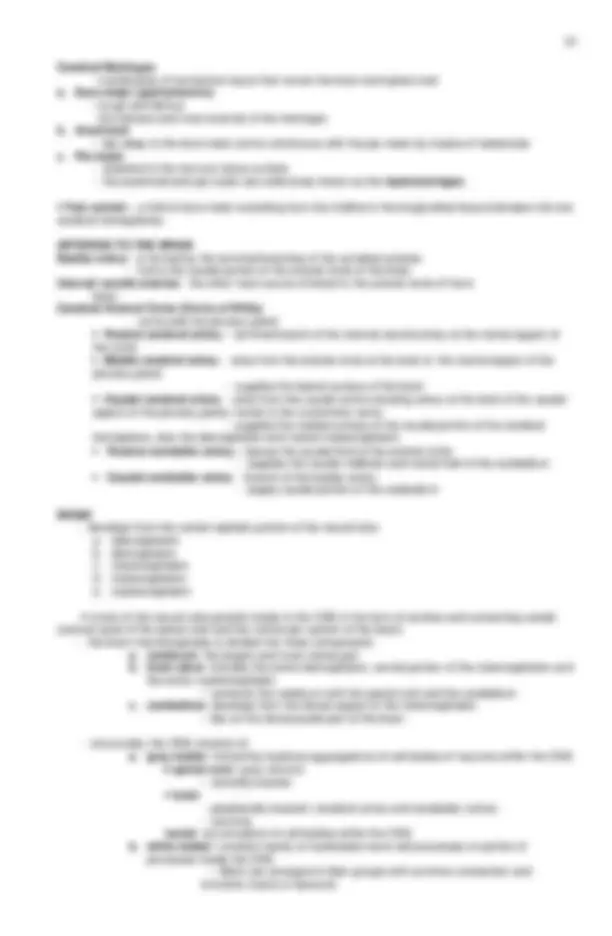

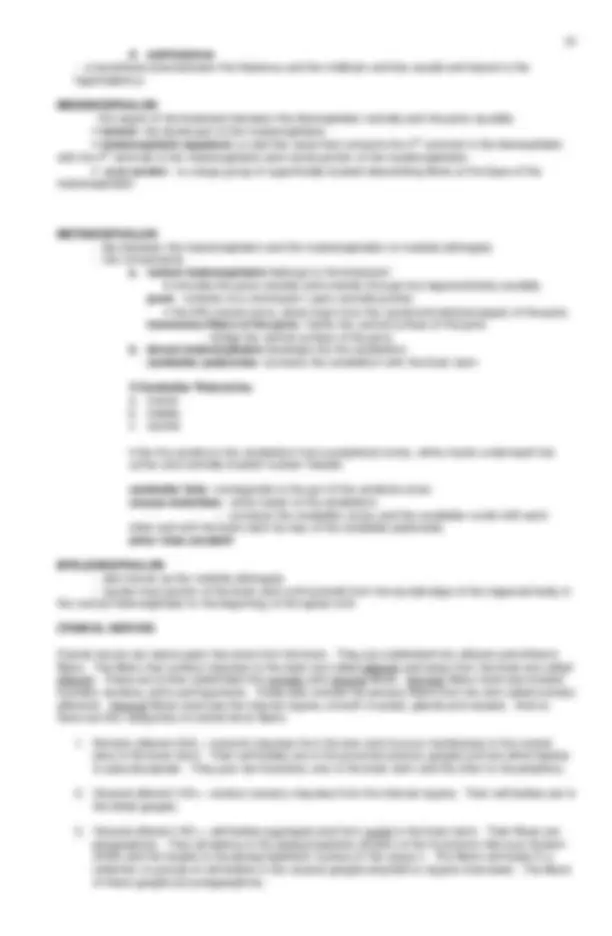
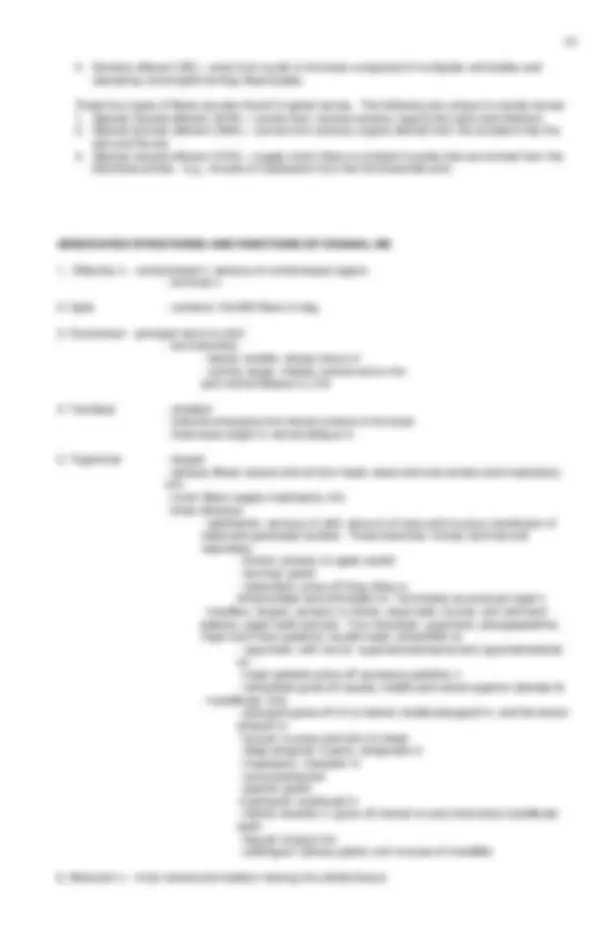
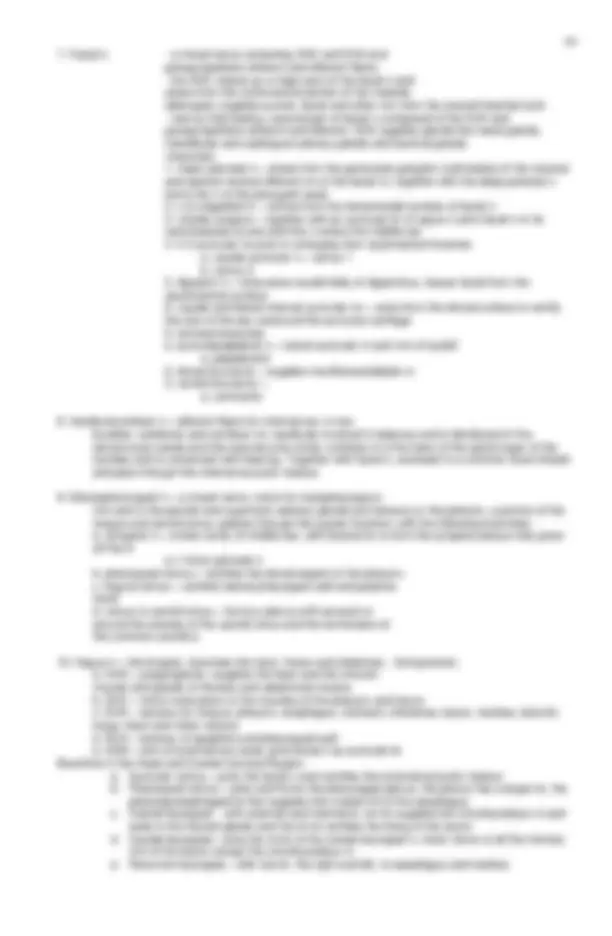




Study with the several resources on Docsity

Earn points by helping other students or get them with a premium plan


Prepare for your exams
Study with the several resources on Docsity

Earn points to download
Earn points by helping other students or get them with a premium plan
Community
Ask the community for help and clear up your study doubts
Discover the best universities in your country according to Docsity users
Free resources
Download our free guides on studying techniques, anxiety management strategies, and thesis advice from Docsity tutors
Gross Veterinary Anatomy (VETA 50) lecture notes
Typology: Lecture notes
Uploaded on 08/10/2021
5
(1)1 document
1 / 56

This page cannot be seen from the preview
Don't miss anything!

















































Anatomy - branch of science that deals with the form and structure (morphology) of all organisms
Divisions: I. Macroscopic or gross anatomy - study of structures of the body (tissues and organs) with the naked eye Comparative anatomy - study of structures of different animal species; focusing on the distinct anatomical differences and correlations between these differences
II. Microscopic anatomy (cytology and histology) - study of cells, and structural organization of tissues, organs and systems with the use of a microscope Ultrastructural cytology - study of ultrastructural feature of cells (very minute structural details cellular components) with the use of an electron microscope Pathologic anatomy – study of organs functionally deviating from the normal
III. Embryology - study of developmental anatomy (ontogenesis); beginning from fertilization to birth of the offspring Teratology – study of abnormal development
Methods of study:
History of the current medical etymology and anatomical nomenclature
1895 Basle Nomina Anatomica 1955 Nomina Anatomica – International Congress of Anatomists in Paris 1989 6 th^ ed of Nomina Anatomica – published by Churchill Livingstone
1968 Nomina Anatomica Veterinaria – published by International Committee on Veterinary Anatomical Nomenclature (appointed by the World Association of Veterinary Anatomists) 1994 4 th^ ed of Nomina anatomica veterinaria
Planes
B. Areas/Location
C. Movement/Direction
Articular depressions in a bone
Non-articular depressions in a bone
Blood vessels and nerves
Bones Comprising the Canine Skeleton
Axial skeleton skull and hyoid 50 vertebral column 50 ribs and sternum 34
Appendicular skeleton pectoral limb 90 pelvic limb 96
Heterotropic skeleton os penis 1
321
Vertebral column
Function: protect the spinal cord and roots of spinal nerves, support of the head, attachment of muscles related to body movements
Basic movements of the vertebral column
A typical vertebrae consist of the body, vertebral arch with a right and left pedicle and lamina, and processes for muscular or articular connection.
all foramina concur to form the vertebral canal cranial vertebral notch is shallow caudal vertebral notch is deep when the vertebrae are articulated, notches on either side of adjacent vertebrae with fibrocartilage form the right and left intervertebral foramina where the spinal nerves, arteries and veins pass
Classification of vertebra based on region:
Vertebral formula of the dog: C 7 T 13 L 7 S 3 Cd 20 A vertebral formula consists of the first letter of the word designating each vertebral group followed by the digit designating the number of vertebrae in a specific group. All vertebrae except the sacral remain separate and articulate with contiguous vertebrae in forming movable joints. The three (3) sacral vertebrae fuse to form the sacrum ( os sacrum ).
SYNDESMOLOGY
Articulation or joint – formed by union of two or more bones or cartilage by other tissues Examples: The mandible forms a synovial joint with the temporal bone, hyoid bone is attached to temporal bone by cartilage, and sutures are immovable joints between bones of the skull.
Classification:
Muscles have the property of contractility and conductivity. Instead of cells, muscles consist of fibers because of their arrangement.
Classification:
Appearance based on arrangement of fibers
The thickest part of a muscle is the belly. An intermediate tendon produces two bellies (digastric). To produce skeletal movements, the muscle must traverse at least one joint.
Tendons - join skeletal muscle to bone function: transmit force in one direction, and act as shock-absorbers may pass through groove or sheath Golgi tendon organs: special nerve endings: measure force (stretch?) outer sheaths: white; random collagen; many fibroblasts - epitenon, epiligament insertions: blend with periosteum; some penetrate bone; folding at myotendinous junction
In general, the system is made up of two portions: the conducting and the respiratory portions. The first portion is involved in the taking and releasing of air and the respiratory portion is involved in exchange of gases, CO 2 to O 2.
Functions of the Conducting Portion :
Parts of the conducting portion:
CIRCULATORY SYSTEM
The whole extent of the circulatory system is composed of tubular organs.
DIGESTIVE SYSTEM
The digestive system consist of a musculomembranous tube extending from mouth to anus. It functions for ingestion, rendering, digestion and absorption of food, and elimination of solid wastes.
Layers of a tubular organ
Alimentary canal
Accessory glands
URINARY SYSTEM
The ultimate function of the urinary system is the filtration of blood and elimination of harmful wastes. It is generally composed of a filtration organ, organ for storage of urine and means to transport and eliminate urine from the body.
Bones
Bones of the thoracic limb:
A. Joints in the Forelimb Synsarcosis - false jt. between scapula and bony thorax (since 2 structures are held in place by muscles and ligaments
Pectoral Muscles: A. Superficial pectoral Two parts: a. descending pectorals b. transverse pectorals Origin: first two sternebrae Insertion: whole crest of the greater tubercle of the humerus Action: to adduct the limb Innervation: cranial pectoral nerves
B. Deep Pectoral (ascending pectoral) Origin: ventral part of the sternum
Insertion: lesser tubercle of the humerus, aponeurosis of the greater tubercle and its crest and medial brachial fascia Action: pull trunk cranially when the limb is advanced, extend the shoulder and to draw the limb caudally when it is not supporting weight Innervation: caudal pectoral nerves
Brachiocephalicus Divided into 2 parts: a. distal to the clavicular intersection cleidobrachialis b. muscle that extends from the clavicular tendon to the dorsum of the neck cleidocervicalis cleidomastoideus Origin: clavicular intersection Action: to advance the limb; extend the shoulder and the head and neck from side to side Innervation: accessory nerve and ventral branches of the cervical nerves
Sternocephalicus Divided into two parts: a. sternomastoideus b. sternooccipitalis Origin: manubrium Insertion: mastoid part of the temporal bone and nuchal crest of the occipital bone Action: to draw the neck to the side Innervation: accessory nerve and ventral branches of the cervical nerves
Sternohyoideus Origin: manubrium Insertion: basihyoid Action: to pull the tongue and larynx caudally Innervation: ventral branches of the cervical nerves
Sternothyroideus Origin: first coastal cartilage Insertion: thyroid cartilage Action: to draw the tongue and larynx caudally Innervation: ventral branches of the cervical nerves
Omotransversarius Action: to advance the limb or flex the neck laterally Innervation: accessory nerve
Trapezius Divided into two parts: a. thoracic b. cervical Origin: median raphe of the neck and supraspinous ligament Insertion: spine of the scapula Action: to elevate and abduct the forelimb Innervation: accessory nerve
Rhomboideus Divided into three parts: a. thoracic b. capital c. cervical Origin: nuchal crest of the occipital bone; median fibrous raphe of the neck and the spinous process of the first seven thoracic vertebrae Insertion: dorsal border and adjacent surface of the scapula Action: to elevate the forelimb and draw the scapula against the trunk Innervation: ventral branches of the cervical and thoracic nerves
Latissimus dorsi Origin: thoracolumbar fascia Insertion: teres major tuberosity of the humerus and teres major tendon Action: to draw the limb caudally and flex the shoulder
Triceps brachii Consists of four heads: a. long head Origin: caudal border of the scapula Insertion: the olecranon Action: to extend the elbow and flex the shoulder Innervation: radial nerve b. lateral head Origin: tricipital line of the humerus Insertion: the olecranon Action: to extend the elbow Innervation: radial nerve c. Accessory head Origin: neck of the humerus Insertion: the olecranon Action: to extend the elbow Innervation: radial nerve
d. Medial head Origin: crest of the lesser tubercle Insertion: the olecranon Action: to extend the elbow Innervation: radial nerve
Anconeus Origin: lateral epicondylar crest and the lateral and medial epicondyles of the humerus Insertion: lateral surface of the proximal end of the ulna Action: to extend the elbow Innervation: radial nerve
Cranial Muscle of the Arm Biceps brachii Origin: the supraglenoid tubercle Insertion: the ulnar and radial tuberosity Action: to flex the elbow and extend the shoulder Innervation: musculocutaneous nerve
Brachialis Origin: proximal third of the lateral surface of the humerus Insertion: the ulnar and radial tuberosity Action: to flex the elbow Innervation: musculocutaneous nerve
Cranial and Lateral Muscles of the Forearm Extensor carpi radialis Origin: lateral epicondylar crest Insertion: small tuberosity on the proximal ends and dorsal surfaces of metacarpals II and III Action: to extend the carpus Innervation: radial nerve
Common digital extensor Origin: lateral epicondyle of the humerus Insertion: extensor process of the distal phalanges of digits II, III, IV and V Action: to extend the joints of the four principal digits Innervation: radial nerve Lateral digital extensor Origin: lateral epicondyle of the humerus Insertion: proximal ends of all phalanges of digits III, IV and V, but mainly the extensor processes of the distal phalanges of these digits Action: to extend the digits III, IV and V Innervation: radial nerve
Ulnaris lateralis Origin: lateral epicondyle of the hunerus Insertion: lateral aspect of the proximal end of metacarpal V and the accessory carpal bone Action: to abduct and flex the carpus Innervation: radial nerve
Supinator Origin: lateral epicondyle of the humerus Insertion: cranial surface of the proximal fourth of the radius Action: supination and flex the elbow Innervation: radial nerve Pronator teres Origin: medial epicondyle of the humerus Insertion: medial border of the radius between the proximal and middle thirds Action: pronation and flex the elbow Innervation: median nerve
Abductor pollicis longus Origin: lateral border and cranial surface of the body of the ulna; the interosseous membrane Insertion: the proximal end of metacarpal I Action: to abduct the digit or pollex Innervation: radial nerve
Cranial and Medial Muscles of the Forearm Flexor carpi radialis Origin: the medial epicondyle of the humerus and the medial border of the radius Insertion: the palmar side of the proximal ends of the metacarpals II and III Action: to flex the carpus Innervation: median nerve
Superficial digital flexor Origin: the medial epicondyle of the humerus Insertion: palmar surface of the base (proximal end) of the middle phalanges of digits II, III, IV and V Action: to flex digits II, III, IV and V Innervation: median nerve
Flexor carpi ulnaris Two heads: a. ulnar b. humeral Origin: ulnar head- the caudal border and medial surface of the olecranon; humeral head- medial epicondyle of the humerus Insertion: accessory carpal bone Action: to flex the carpus Innervation: ulnar nerve
Deep digital flexor Three heads: a. humeral b. radial c. ulnar Origin: humeral head- medial epicondyle of the humerus; ulnar head- proximal three-fourths of the caudal border of the ulna; radial head- medial third of the medial border of the radius Insertion: the palmar surface of the base (proximal end) of the distal phalanx of each digit Action: to flex the digits Innervation: median and ulnar nerves
Pronator quadratus Attachments: apposed surfaces of the radius and ulna Action: to pronate the paw Innervation: median plane
Muscles of the Forepaw Interossei
Vessels and Nerves of the Thoracic Limb Primary Vessels of the Thoracic Limb Subclavian artery Vertebral Costocervical Internal thoracic Superficial cervical
Table 1. Vessels and nerves of the Thoracic Limb AREA Arterial supply Nerve supply Lateral muscles of the Scapula and Shoulder Stabilizers, flexors and extensors of shoulder: Supraspinatus, infraspinatus
Superficial cervical Suprascapular
Caudal Muscles of Scapula and Shoulder Flexors of shoulder: Deltoideus, teres major, teres minor
Subscapular Axillary
Cranial Muscles of Arm Flexors of elbow, extensor of shoulder: Biceps brachii (Brachialis)
Superficial cervical, Axillary, Brachial
Musculocutaneous
Caudal Muscles of the Arm Extensor of Elbow: Triceps brachii
Axillary, Brachial Radial
Cranial Muscles of Forearm Carpal extensors Digital extensors
Brachial: cranial interosseous
Radial
Caudal Muscles of the Forearm Carpal flexors Digital flexors
Brachial: common interosseous, deep antebrachial
Median and ulnar
Dorsal Surface of Paw Superficial brachial, Dorsal carpal rete
Radial
Palmar Surface of Paw Median, Caudal interosseous
Median and ulnar
Bones of the pelvic limb:
pubis
pelvic symphysis – joins the left and right os coxae pelvic girdle articulates with the sacrum dorsally bony pelvis is formed by the os coxae, sacrum and first few caudal vertebrae
superficial gluteal Origin: lateral border of the sacrum Insertion: third trochanter Action: extend the hip and abduct the limb Innervation: caudal gluteal nerve
middle gluteal Origin: ileal crest and gluteal surface of ilium Insertion: the greater trochanter Action: to extend and abduct the hip Innervation: Cranial gluteal nerve
deep gluteal Origin: body of lium Insertion: cranial aspect of the greater trochanter Action: to extend and abduct the hip Innervation: cranial gluteal nerve
Caudal Hip muscles
Internal obturator Origin: pelvic symphysis Insertion: trochanteric fossa of the femur Action: to rotate the pelvic limb laterally Innervation: sciatic nerve
gemelli Origin: lateral surface of the ischium Insertion: the trochanteric fossa Action: to rotate the pelvic limb laterally Innervation: sciatic nerve
quadratus femoris Origin: caudo-ventral part of the ischium Insertion: distal to the trochanteric fossa Action: to rotate the pelvic limb laterally Innervation: sciatic nerve
external obturator Origin: ventral surface of pubis and ischium Insertion: trochanteric fossa Action: to rotate the pelvic limb laterally Innervation: obturator nerve
Cranial muscles of the Thigh
quadriceps femoris Has four heads: rectus femoris vastus lateralis vastus medialis vastus intermedius Origin: rectus femoris – ilium; vasti muscles – proximal femur Insertion: tibial tuberosity Action: to extend the stifle and flex the hip (rectus femoris) Innervation: femoral nerve
iliopsoas Composed of two muscles: psoas major iliacus Origin: psoas major – lumbar vertebrae; iliacus – cranioventral ilium Insertion: lesser trochanter Action: to flex the hip Innervation: psoas - ventral branches of lumbar nerves: iliacus – femoral nerve
Craniolateral Muscles of the Crus
cranial tibial Origin: extensor groove of the tibia Insertion: the proximal plantar surface of metatarsals I and II Action: to flex the tarsus and rotate the paw laterally Innervation: peroneal nerve
long digital extensor Origin: extensor fossa of the femur Insertion: distal phalanges of digit II, III, IV and V Action: to extend the digits and flex the tarsus Innervation: peroneal nerve
peroneus longus Origin: lateral condyle of the tibia; proximal end of fibula and lateral epicondyle of femur Insertion: fourth tarsal bone Action: flex the tarsus and rotate the paw medially Innervation: peroneal nerve
Caudal Muscles of the Crus
gastrocnemius – has two head, lateral and medial heads Origin: medial and lateral supracondylar tuberosities of the femur Insertion: tuber calcanei Action: extend the tarsus and flex the stifle Innervation: tibial nerve
superficial digital flexor Origin: lateral supracondylar tuberosity of the femur Insertion: tuber calcanei and middle phalanges of digits II, III, IV and V Action: to flex the digits and stifle; extend the tarsus Innervation: tibial nerve
deep digital flexor Composed of two muscles lateral digital flexor medial digital flexor Origin: proximal tibia and fibula Insertion: plantar surface of the base of each of the distal phalanges Action: to flex the digits and extend the tarsus Innervation: tibial nerve
popliteus Origin: the lateral condyle of the femur Insertion: the proximal third of caudal tibia Action: to flex the stifle and rotate the leg medially Innervation: tibial nerve